Back in Black
What do you do if you’re the creator of Black Mirror, and the world catches up with your dire predictions about technology taking over everyone’s lives?
Well, with Season 6 now streaming on Netflix, Charlie Brooker’s omnibus series seems fixated on going… back to the future.
In most of this season’s five episodes, we are still looking at the world through a black-surfaced device—a camera lens or a cell phone or TV screen. But there’s a conscious shift towards looking backwards—whether it’s through horror tropes lifted straight out of someone’s ‘80s VHS collection, or alternate imaginings of the 1969 space mission. In each chapter, technology still plays a part—but only in showing how our instincts towards devices and self-documentation were always evident, even back in the day. And now we just can’t look away.
The question that keeps bubbling up this season is: How did we get here?
How did we devolve into this world of voyeuristic pleasures and self-gazing indulgence? Or were we always like this, and the black mirrors surrounding us have just magnified the abyss we’re hurtling towards?
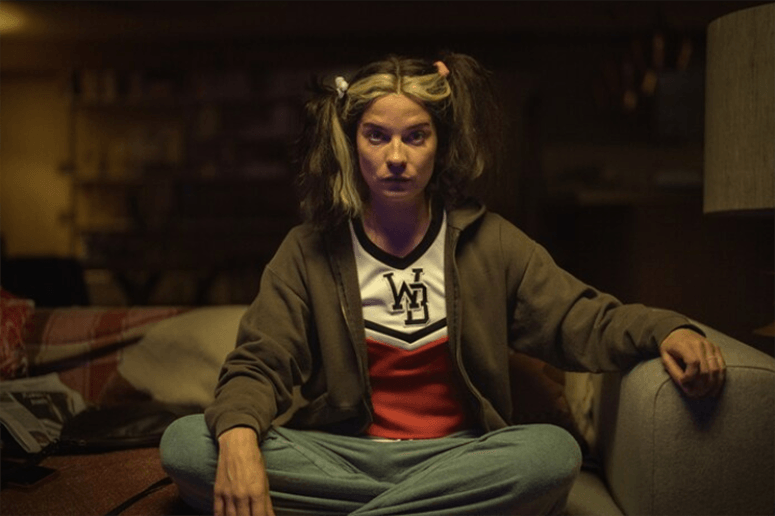
Opening chapter “Joan is Awful” is somewhat of a near-future anomaly, with all the ingredients of a classic Black Mirror dive: Annie Murphy (from Schitt’s Creek) quickly discovers her life is being turned into a real-time TV series with actress Salma Hayek playing her, acting out her current travails on a streaming service called (wait for it…) Streamberry, which features the same “Tudum” cue sound used by a certain other actual streaming service we’re all familiar with.
It’s mostly a hoot, from Hayek’s meta rants to Murphy’s slow-burn frustration as her life becomes co-opted by her user agreements. And sure, it’s an obvious target, in an age where user-server horror stories like Severance are the norm. But Black Mirror premiered back in 2011. That’s a lot of data decay under the bridge.
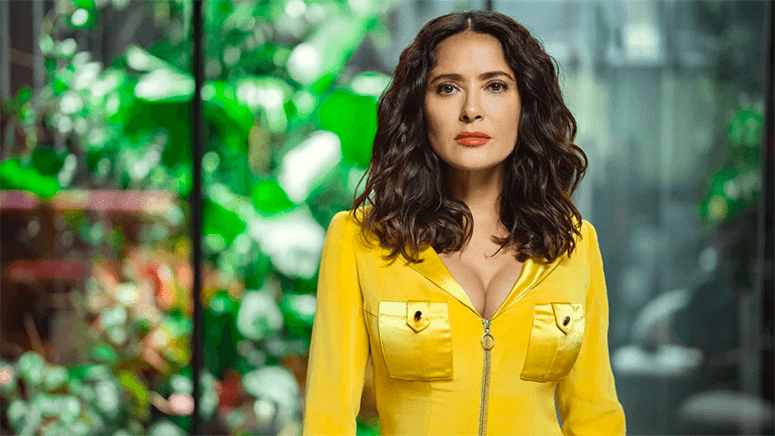
A Streamberry top media exec gives the game away, when an interviewer asks her about the service’s doomful content: “Why is it all so negative?” The exec explains, “We did try a more affirmative content, but we found our subjects didn’t buy it; it didn’t chime with their neurotic view of themselves. Instead, when we focused on their more weak, selfish and craven moments, it confirmed their greatest fears, and put them in a state of mesmerized horror… which really drives engagement.”
We did try a more affirmative content, but we found our subjects didn’t buy it; it didn’t chime with their neurotic view of themselves. Instead, when we focused on their more weak, selfish and craven moments, it confirmed their greatest fears, and put them in a state of mesmerized horror… which really drives engagement.
The meta fun continues with a series of twists and celebrity cameos (Michael Cera pops up: “This show isn’t called Salma Hayek Gets Everything Explained to Her and Still Doesn’t Understand It! It’s called Joan is Awful!”) and it’s great to have Brooker once again holding up our faces to the cracked black surface that is our modern technology.
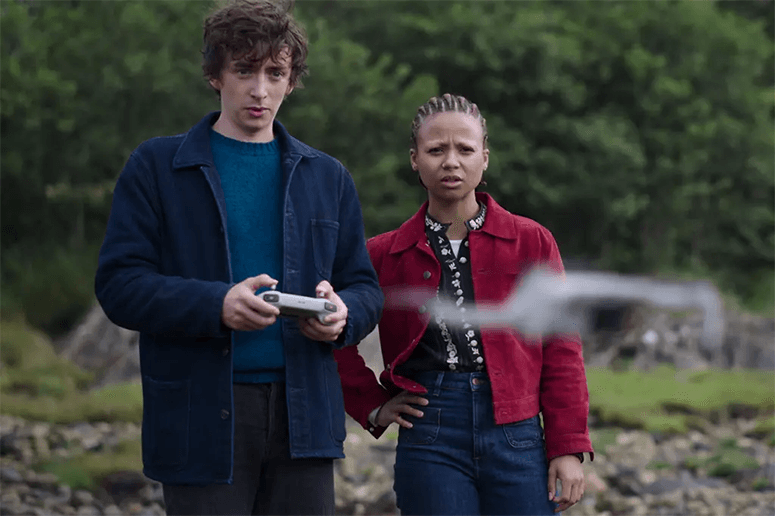
“Loch Henry” takes another critical gaze at streaming, with a pair of young documentary makers swept up in a serial killer case in a small Scottish town that quickly grows too close to home. It’s a poignant look at how “old” technology—VHS tapes, in this case—feed naturally into our primal instinct to document everything and turn it into awards night gold: alchemy at its worst.
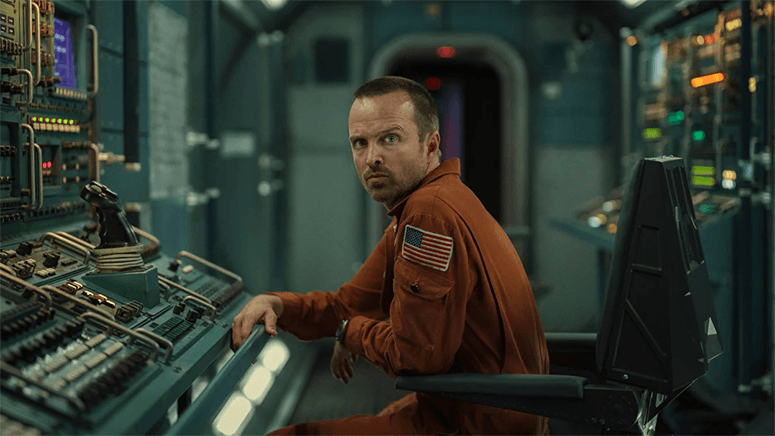
“Beyond the Sea” follows astronauts Josh Hartnett and Aaron Paul in an alternative 1969—there’s a manned space mission, but also the technology to create robot avatars back home so the space-bound astronauts can interact with their families. But this being 1969, there are also crazed alt-version Manson family members wandering around, hell-bent on slaughtering those who embrace technology, going “against nature.” Behind it all is a weird twist on the Cain and Abel story that’s at times touching, with Hartnett coveting those things his co-pilot has, but hardly appreciates.
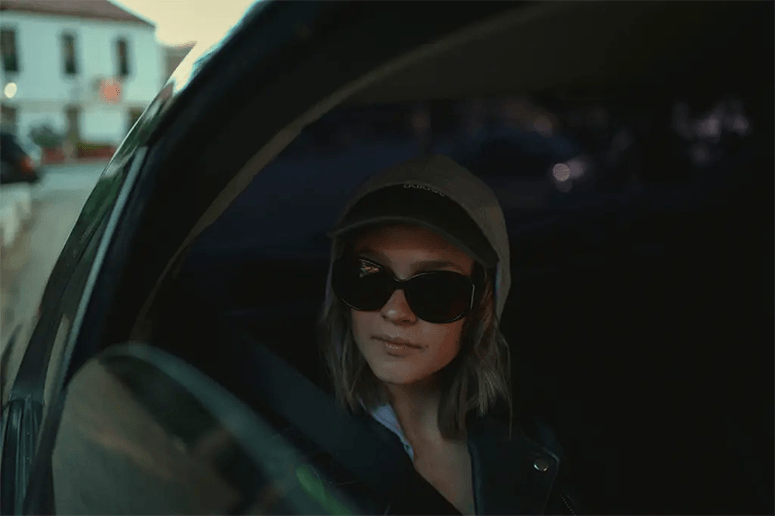
In “Mazey Day,” Zazie Beetz plays a diehard paparazza who decides to drop the clicks-for-bucks game after one of her scandal subjects commits suicide. She’s lured back in though when a young movie star seemingly checks into a rehab center in an isolated Czech Republic town. Suddenly, we’re drawn into a John Landis lycanthropic nightmare circa 1981.

Final episode “Demon 79” announces itself under the “RED MIRROR” label (signaling a shift to a new Brooker omnibus series, mayhaps?) and draws us back to the horror trope, but with shades of apocalyptic damnation nipping at its heels, as shopgirl Anjana Vasan encounters a demon in the guise of the singer/dancer from ‘80s techno-pop band Boney M. (Random!) It seems there’s no salvation to be found in the past, either.
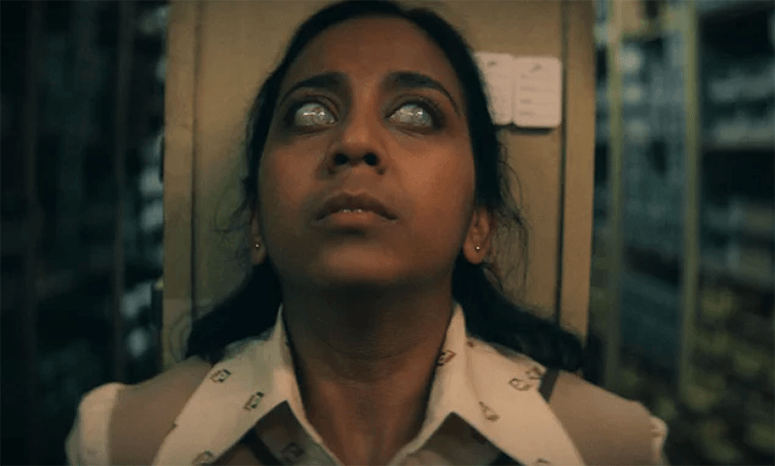
Brooker consciously recreates an ‘80s horror vibe (hey, it worked for Stranger Things) and other staples of the omnibus template with his sixth season. Is it an effort to examine how old-school technology has led us to the current state of affairs? Or is it just a retreat into comforting nostalgia?
And why the sudden shift? Brooker may just be tired of looking into his own black mirror, playing Nostradamus to all the tectonic tech glitches: “I didn’t want to have to think, ‘What’s the episode of Black Mirror about NFTs?’ which is an idea that depressed me greatly.” He calls Season 6 “a conscious effort to rip up the rule book,” even if it means rummaging through the past.
Will the result be a completely new series, a refreshed Black Mirror that’s as prescient and zeitgeisty as before? Or just an icky hybrid—like Jeff Goldblum emerging from a transporter with multiple fly parts?
Season 6 serves up just enough eerie self-recognition, with a few new twists, to keep us digesting more. In a state of mesmerized horror, if you will.
Black Mirror Season 6 streaming on Netflix.



